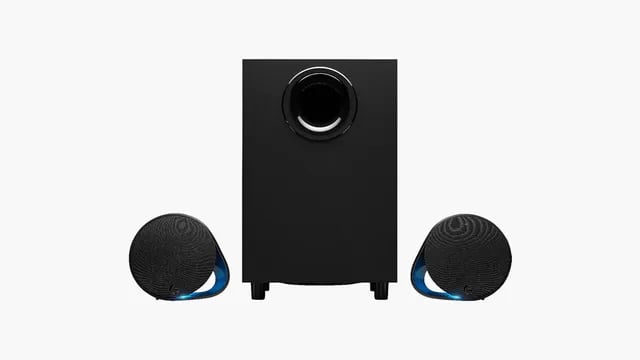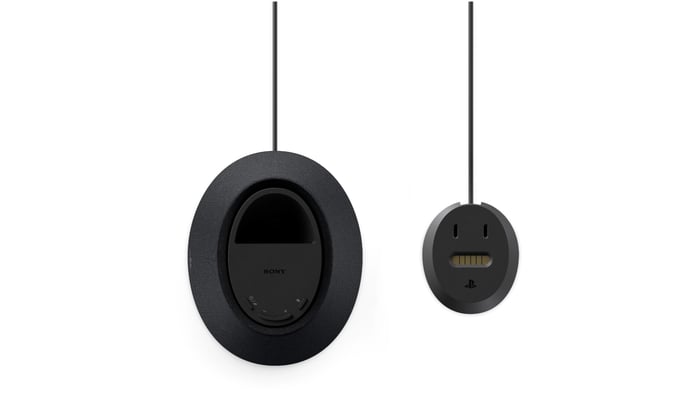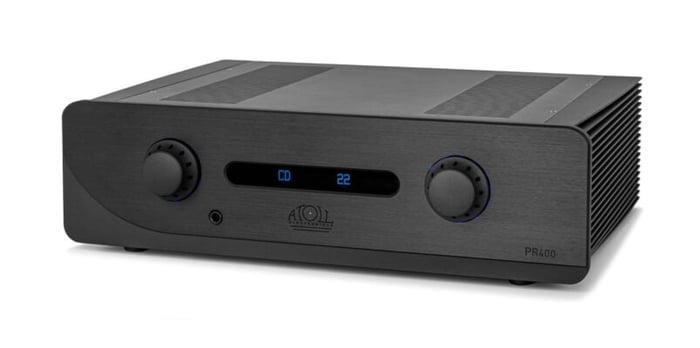
Linn Klimax 360 Exact System Review: A High-End Integrated Audio Marvel
Linn Klimax 360 Exact System Review: A High-End Integrated Audio Marvel
Explore the Linn Klimax 360 Exact System’s innovative integrated design and remarkable sound quality that redefines high-end stereo listening.
A Bold Leap into the Future of Audio
Over three decades ago, Linn embarked on a visionary journey into the future of audio by expanding their portfolio with networked electronics and deep software engineering. This bold move came after years of crafting iconic turntables, tonearms, and cartridges during the 1970s, alongside a reputation for exceptional speakers and amplification gear.
The Linn Klimax System with 360 Integrated Exakt speakers stands out as Linn’s flagship 2-channel audio masterpiece, pushing boundaries once again. So, how does this premium system stack up in today’s competitive high-end market? Let’s dive in.

The All-In-One Audio Experience
The Klimax 360 system is no ordinary stereo setup—it’s a fully integrated two-channel powerhouse that combines speakers, eight amplifiers, a control center, digital-to-analog conversion, a system hub/streamer, and room tuning technology. All wrapped into one seamless package for $144,700. Admittedly, this price tag might be out of reach for many enthusiasts, but understanding what you get here is key to appreciating its value.
When you break down the cost of a typical high-end stereo—say a $25,000 amplifier, $15,000 preamp, $20,000 DAC, $10,000 streamer, and $75,000 speakers—you quickly reach a similar price point. So, while pricey, the Linn system offers a compelling all-in-one alternative to assembling separates.
Integrated Systems vs. Separates: The Technical Tug-of-War
Historically, audiophiles favored separates for top-tier sound. But the downside is that generic interfaces between components can limit ultimate performance. Take speaker crossover design, for example. Passive crossovers often avoid steeper slopes like 24 dB/octave because they’re harder and costlier to implement. Whereas electronic crossovers can easily use such slopes for superior power handling and refined sound dispersion.
The Linn 360 system leverages such electronic crossovers and direct-to-driver amplification to unlock neat tricks impossible in passive designs:
- Correcting driver timing with precision
- Eliminating power loss in crossovers
- Mitigating room acoustics issues
- Tuning to specific room materials
- Adjusting frequency response based on listener preferences
- Automatically adapting output levels
- Calibrating to unique measured component values of each system
This technological wizardry speaks to the heart of why integrated systems like the Linn Klimax 360 can break new ground.
DSP: Friend or Foe?
Digital Signal Processing (DSP) often sparks debate among audiophiles. It’s a powerful tool to tackle many acoustic challenges but can be tricky because it brings software engineering and psychoacoustics into play—fields outside traditional electro-mechanical design.
The Linn 360 embraces DSP wholeheartedly to correct driver and digital distortions while optimizing for the real-world room your speakers live in. Their “Space Optimization” system uses data like speaker placement, room dimensions, and materials, uploading this info to Linn’s cloud. The result? A finely tuned sound tailored to your space without burdening you with the technical details.
This approach is like handing you a gourmet meal rather than a box of ingredients and saying, “Good luck cooking!” You can still tweak the bass profile via a simple slider, but the heavy lifting is done behind the scenes.
Sophisticated Speaker Design
The 360 is a 4-way marvel featuring a tiny 19mm (0.8 inch) tweeter paired with a 64mm (2.5 inch) carbon fiber dome midrange. This duo is driven by adaptive bias amplifiers that reduce crossover distortion to the minimum.
Next up is an aluminum upper bass driver, followed by two larger high-excursion aluminum cone low bass drivers powered by dedicated power DACs. The goal? Achieve consistent off-axis response—meaning the sound you hear sitting off to the side matches the on-axis response closely. This requires complex crossover design and a unique compound-curve cabinet shape.
Sound Quality: Immersive and Natural
During an extended listening session at Audio Concepts’ Dallas showroom, I experienced the Linn 360 in a room size akin to many living rooms—18 by 26 feet. The speakers were positioned just three feet from the wall, mimicking real-life setups with minimal room treatment.
What struck me immediately was the system’s spatial magic.
Spatial Presentation
The immersive soundstage was anything but stationary. Images floated beyond the speakers, and the music’s ambient environment felt natural and expansive. Whether a club, hall, or concert space, the sound held impressive dimensionality.
Christian McBride’s Big Band album Without Further Ado beautifully revealed these qualities, painting a spacious, well-proportioned stage. Similarly, Maria Milstein’s Prokofiev Violin Concerto #2 captured an almost live concert hall sensation—a sweet reminder of having heard this piece in concert just a day and a half earlier.
Even sitting off-center (about 4 feet to the right) didn’t degrade the soundstage or performer placement, a rare feat most systems struggle to achieve. On Thomas Stronen’s album Relations, the image extended roughly 3 feet beyond each speaker—a testament to the system’s spaciousness.
Rhythm and Scale
The Linn 360 doesn’t just create space; it breathes life into music’s rhythm and scale. Punchy percussion and bass lines on Rhiannon Giddens’ “Too Little, Too Late, Too Bad” propelled the band forward in a way that felt natural and exciting. The Joe Policastro Trio’s album Pops kept a lively pace that never dragged, as if the metronome were wired directly to the musicians’ hearts.
Rock and blues fans will appreciate the epic scale on the Black Keys’ “Crawling Kingsnake” from Delta Kreme. The combination of spaciousness, rhythmic drive, and clear instrument separation makes listening to amplified music a grand experience. Even at loud but reasonable volumes (around 85 dB average), the system maintained headroom without compression.
Bass
The Linn 360 delivers deep bass effortlessly, reaching down to the 30 Hz range and below. Those low notes add palpable impact and spatial depth—a feeling akin to hearing a large bass drum resonate in a concert hall.
There may be a slight boost below 50 Hz, which many listeners find pleasing. The bass is not overwhelming, though; it’s perfectly balanced for natural impact. However, keep in mind that some room effects like lateral nulls or speaker boundary dips remain challenges for any two-box system.
Voicing
The system’s tonal balance is even from mid-bass through midrange, with a slight lift in the 2-4 kHz range that emphasizes clarity and punch without sounding peaky. This makes strings, for example, come alive with beauty and detail. The midrange leans vivid rather than soft, with the upper bass and lower midrange remaining neutral—not warm.
One interesting note: while the system excels in instrumental clarity, it doesn’t offer the finest micro-dynamic detail or ultra-low noise floor that some higher-priced systems provide. Hardcore audiophiles might miss this subtlety, but many listeners will appreciate the Linn 360’s focus on musical involvement and emotional connection.
Final Thoughts
The Linn Klimax 360 Integrated Exakt System is a tour de force that showcases the promise of advanced technology few rivals can match. Its combination of bold, impactful sound and natural balance is rare, especially in a package designed to perform beautifully in real-world living rooms.
If you're dreaming of a high-end stereo system where innovation meets musicality, the Linn 360 deserves a close listen.
FAQ
- What makes the Linn Klimax 360 system different from traditional stereo setups?
It integrates speakers, amplifiers, DAC, streamer, and DSP-based room tuning into one cohesive system, designed for ultimate synergy and performance. - How does the Space Optimization feature work?
Linn’s cloud-based system uses room measurements and speaker placement data to finely tune the audio output for your specific environment. - Is the Linn 360 suitable for typical living rooms?
Absolutely. It performs well in rooms similar in size to many living spaces, even with minimal acoustic treatment. - Does the system support musical genres beyond classical or jazz?
Yes! It handles rock, blues, and jazz with punchy rhythm and spacious soundstage, appealing to fans of amplified music. - Can users adjust the sound to their preferences?
Yes, users can adjust bass profiles via software sliders, while the system handles most tuning automatically.
Looking to celebrate your favorite music with iconic visuals? Shop your favorite album cover poster at our store here and bring the spirit of music into your space with style and passion.
 | DISCOUNTGET 30% OFF*Use code on your next order:
|
* This post may contain affiliate links, meaning we earn a commission if you make a purchase through these links, at no additional cost to you.







